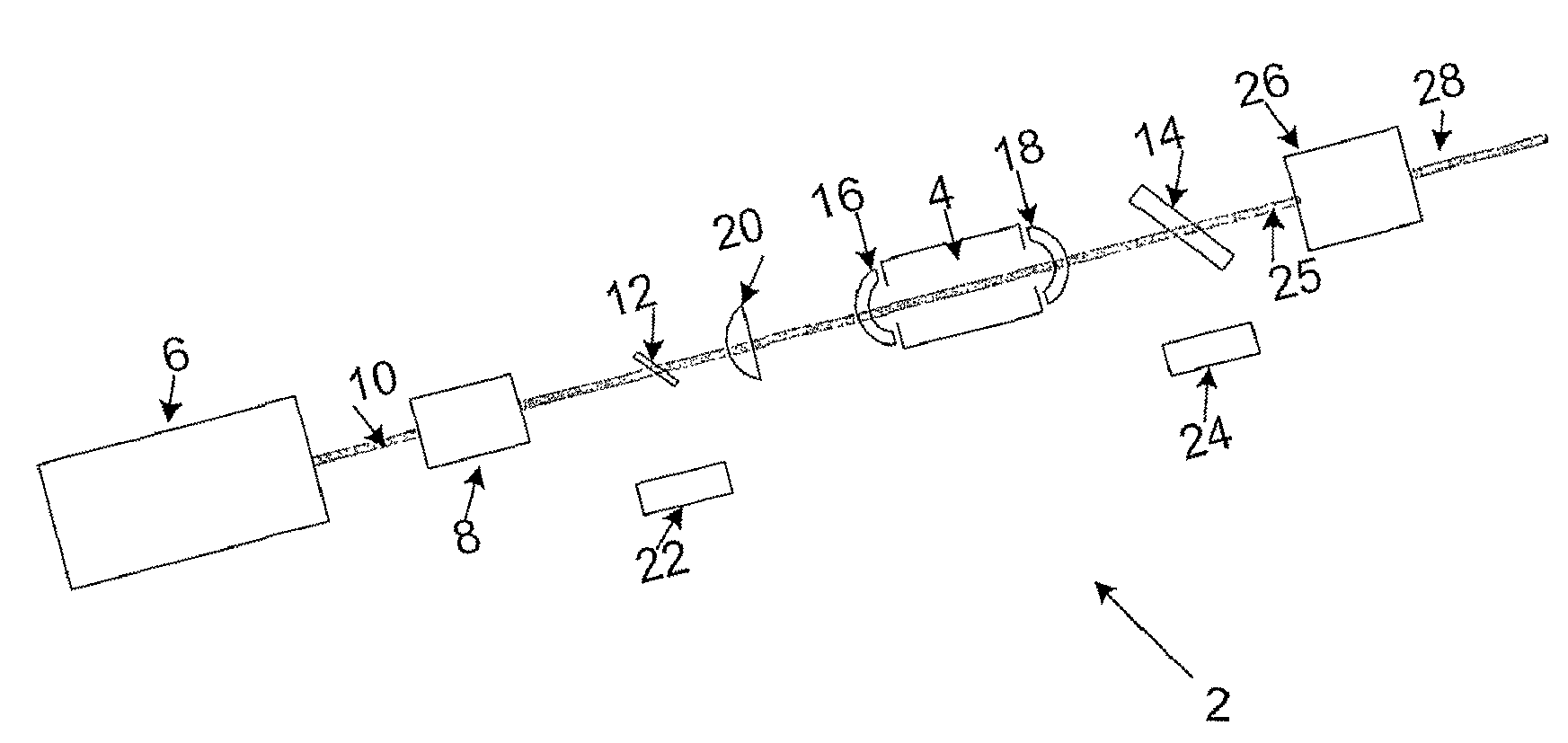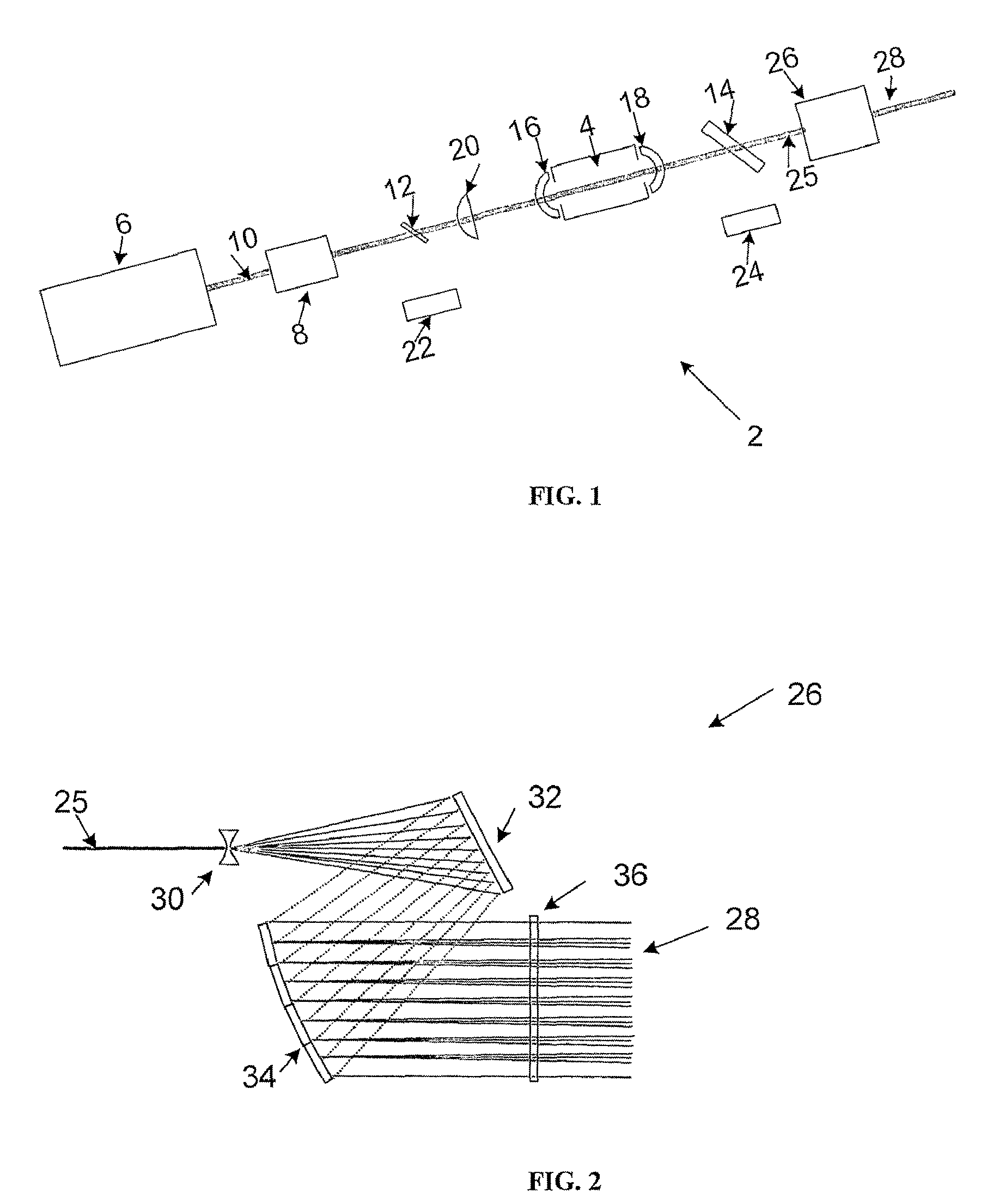Apparatus for use in operator training with, and the testing and evaluation of, infrared sensors which are for missile detection
a technology for infrared sensors and operators, applied in the direction of optical radiation measurement, instruments, semiconductor lasers, etc., can solve the problems of inability to operate in practicable conditions, thermal management problems, and limited use of infrared illumination sources such as lamps or thin filaments
- Summary
- Abstract
- Description
- Claims
- Application Information
AI Technical Summary
Benefits of technology
Problems solved by technology
Method used
Image
Examples
Embodiment Construction
[0036]Referring to FIGS. 1 and 2, there is shown apparatus 2 for use in the testing and evaluation of infrared sensors which are for missile detection and which integrate incident energy over a finite time period, according to an exemplary embodiment of the invention. The apparatus 2 comprises at least one infrared illumination source for illuminating the sensors. The infrared illumination source is in the form of a pseudo continuous wave laser infrared illumination source with signal duty and peak power controlled by means of an amplitude, pulse width and pulse repetition interval modulation circuit, whereby the infrared illumination source operates at shorter repetition intervals than the finite time period so that the laser infrared illumination source appears to the infrared sensors to be a missile signature. The laser infrared illumination source is an optical parametric oscillator 4, which is pumped by a laser 6. The laser 6 is a yttrium aluminium garnet (YAG) laser.
[0037]The ...
PUM
 Login to View More
Login to View More Abstract
Description
Claims
Application Information
 Login to View More
Login to View More - R&D
- Intellectual Property
- Life Sciences
- Materials
- Tech Scout
- Unparalleled Data Quality
- Higher Quality Content
- 60% Fewer Hallucinations
Browse by: Latest US Patents, China's latest patents, Technical Efficacy Thesaurus, Application Domain, Technology Topic, Popular Technical Reports.
© 2025 PatSnap. All rights reserved.Legal|Privacy policy|Modern Slavery Act Transparency Statement|Sitemap|About US| Contact US: help@patsnap.com



